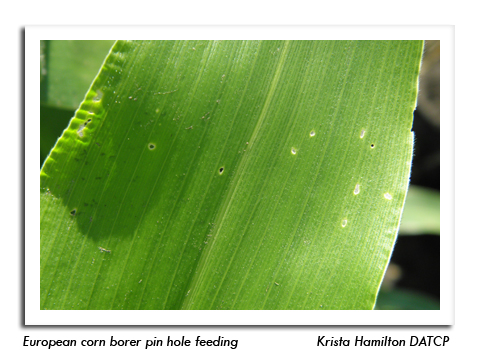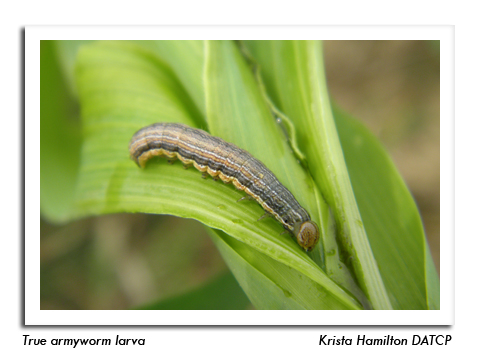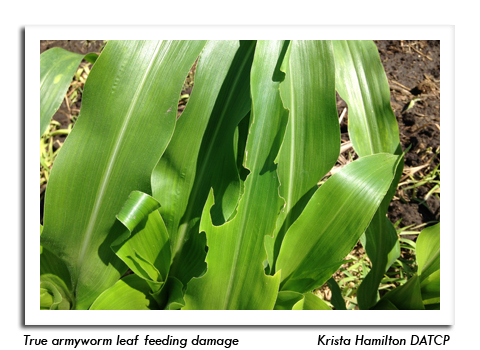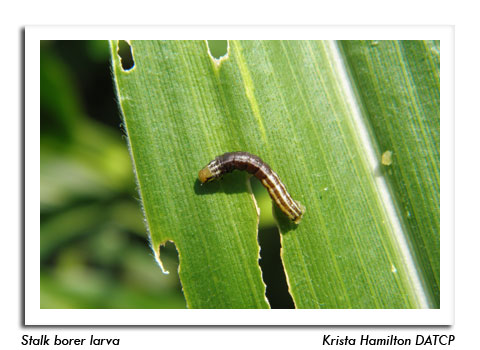
 |
|
|
Corn
Volume 59 Number 8 Date 06/19/2014 TRUE ARMYWORM - Larval infestation rates ranged from 1-6% in fields sampled from June 12-18. These averages are considered non-economic, but actual populations may be larger and more widespread than surveys indicate. In addition, the black light traps near Coon Valley and Janesville registered moderate counts of 39-44 moths this week. Larvae from these flights, coupled with the current armyworms, could present a consistent population for several more weeks. Continued scouting of corn and wheat is strongly advised through early July. EUROPEAN CORN BORER - The spring flight of moths has peaked in the southwest, south-central and west-central areas. Black light trap counts have been low at most sites since the flight began in late May, with the exception of Coon Valley where 29 moths were registered from this week. Oviposition is occurring on corn, snap beans, potatoes and weed hosts, and leaf feeding by first instar larvae should be noticeable in the tallest non-Bt cornfields next week. STALK BORER - Larvae varying in size from ½-¾ inch were the cause of light leaf injury to 1-4% of the edge row plants in corn in Grant, La Crosse, Lafayette, Monroe and Vernon counties. Similar levels of infestation were found last week in Dane, Juneau and Sauk counties. The migration of stalk borers from grass and broadleaf weed hosts into corn is increasing and spot treatment may be warranted by early July for fields showing 5% of plants with damage. As a reminder, most Bt corn hybrids will suppress but not completely control stalk borers, so field scouting is necessary through the V7 stage. -- Krista Hamilton, DATCP Entomologist 




.jpg)
|
|
|